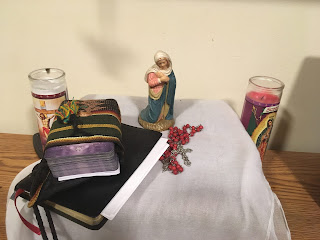The 14th and 15th centuries may have been the birthplace of philosophical, scientific, and religious innovation and discovery, but when we think of the Renaissance, the first thing that comes to mind for most people will always be the art. And for good reason—of all the brave new worlds opened in the Renaissance, the world of art was at the forefront; was part and parcel of a heady new worldview. The art of the Renaissance encapsulates everything that the period was.
We can see this in the way art changed from the medieval era: the expression of humanism in a renewed appreciation for the beauty of the human form; the Renaissance emphasis on verisimilitude reflecting a broader shift in a society newly enamoured of observation, of critical thinking. Where medieval art was symbol, Renaissance art was a representation of reality as it was seen. A manifestation of a pattern, found throughout the Renaissance, of intellectual openness and honesty. A desire to look at the world, to think for oneself. The same curiosity, observation, criticism, would give birth not just to painting and sculpture, but to the Protestant Reformation.
(In the end, what is art but another way of exploring the world? Those on ships to the New World, those reading the Bible for themselves for the first time, those experimenting with chiaroscuro: every one of them was coming to better understand the world around them.)
(A conversation with Sydney, a classmate: Passion comes from exploration, she said. What makes us human is being able to find a new world and explore it. The Renaissance was about exploring the human body—the Reformation was about exploring the human soul.)
The Protestant churches slowly stripped away liturgy and ritual, and what they left to replace it focused on feeling, not on action—a relationship with God; faith, and scripture. Piety? That’s art too. If art is how we explore our feelings, then surely prayer is an art.
(And yet.
The beautiful churches, the incense, the icons of saints and martyrs—all of these became idolatry. Until eventually the Mormon church that I grew up in had such a horror of fanciness that Easter Sunday was a sterile, lifeless meeting, like a school assembly where a policeman comes to talk about drugs.
This is what such meetings miss: that piety is art, but art is itself devotion. That tradition and ritual can be art.
Scripture study at home is piety, is art, and this is the backbone of Protestantism, but where are my icons? Where is my incense?
And where is my license to explore, the thing that makes me human?
We ought to encourage our people to ask questions. To engage critically with their text and their God: to say why is this so, to say this is not right. Mormonism encourages questions, but only as long as you come to the Right Answer. It has forgotten where it came from— from a plowboy asking questions; from a priest calling for reform, from peasants thinking for themselves. This is what we miss: heterodoxy can be devotion too.)
We can see this in the way art changed from the medieval era: the expression of humanism in a renewed appreciation for the beauty of the human form; the Renaissance emphasis on verisimilitude reflecting a broader shift in a society newly enamoured of observation, of critical thinking. Where medieval art was symbol, Renaissance art was a representation of reality as it was seen. A manifestation of a pattern, found throughout the Renaissance, of intellectual openness and honesty. A desire to look at the world, to think for oneself. The same curiosity, observation, criticism, would give birth not just to painting and sculpture, but to the Protestant Reformation.
(In the end, what is art but another way of exploring the world? Those on ships to the New World, those reading the Bible for themselves for the first time, those experimenting with chiaroscuro: every one of them was coming to better understand the world around them.)
(A conversation with Sydney, a classmate: Passion comes from exploration, she said. What makes us human is being able to find a new world and explore it. The Renaissance was about exploring the human body—the Reformation was about exploring the human soul.)
The Protestant churches slowly stripped away liturgy and ritual, and what they left to replace it focused on feeling, not on action—a relationship with God; faith, and scripture. Piety? That’s art too. If art is how we explore our feelings, then surely prayer is an art.
(And yet.
The beautiful churches, the incense, the icons of saints and martyrs—all of these became idolatry. Until eventually the Mormon church that I grew up in had such a horror of fanciness that Easter Sunday was a sterile, lifeless meeting, like a school assembly where a policeman comes to talk about drugs.
 |
| My nightstand: the Blessed Virgin, my favourite rosary, |
| my prayerbook, and my tarot cards. |
Scripture study at home is piety, is art, and this is the backbone of Protestantism, but where are my icons? Where is my incense?
And where is my license to explore, the thing that makes me human?
We ought to encourage our people to ask questions. To engage critically with their text and their God: to say why is this so, to say this is not right. Mormonism encourages questions, but only as long as you come to the Right Answer. It has forgotten where it came from— from a plowboy asking questions; from a priest calling for reform, from peasants thinking for themselves. This is what we miss: heterodoxy can be devotion too.)

No comments:
Post a Comment